May 12 & 13 - Applegate Trail Hike & Learn
On Friday, May 12 a group of history lovers converged on the Ashland Co-op Community Classroom to hear a presentation by Jeff LaLande on The Applegate Trail - American Settlers’ “Back Door to Oregon.” As far as local history buffs go, it doesn’t get much more impressive than Jeff. After moving to Southwestern Oregon from Washington, DC in 1969 –right after graduating from Georgetown University— he immediately dove into the region’s past as well as its geology, flora and fauna. He earned a master’s degree in archaeology from Oregon State University and then a PhD in American History from University of Oregon. Jeff is now retired from a thirty-plus year career as an archaeologist with the US Forest Service on the Rogue River-Siskiyou National Forest. An adjunct professor of history at SOU for over twenty years, he’s authored several books (including the just-published Jackson County Rebellion: A Populist Uprising in Depression-Era Oregon) and a number of articles published in quarterly journals.
Jeff deftly guided us through an overview of the Applegate trail and the men who were instrumental in founding it. It was first laid out in 1846, with its most active period being between 1846 - 1860 by a party including Levi Soctt, David Goff, John Owen and brothers Jesse and Lindsay Applegate. It was known to Oregonians as Applegate’s Cutoff, the Southern Emigrant Road, South Road, or Southern Road and was intended to be a southern alternative to the Oregon Trail that was safer, quicker, and more secure. While it did not necessarily deliver on all of those promises, it was very significant in the settling of the Rogue Valley in the 1850s. Today, portions of the trail are paralleled by I-5 and Highway 66. It was even designated as a National Historic Trail in 1992 by the National Park Service.
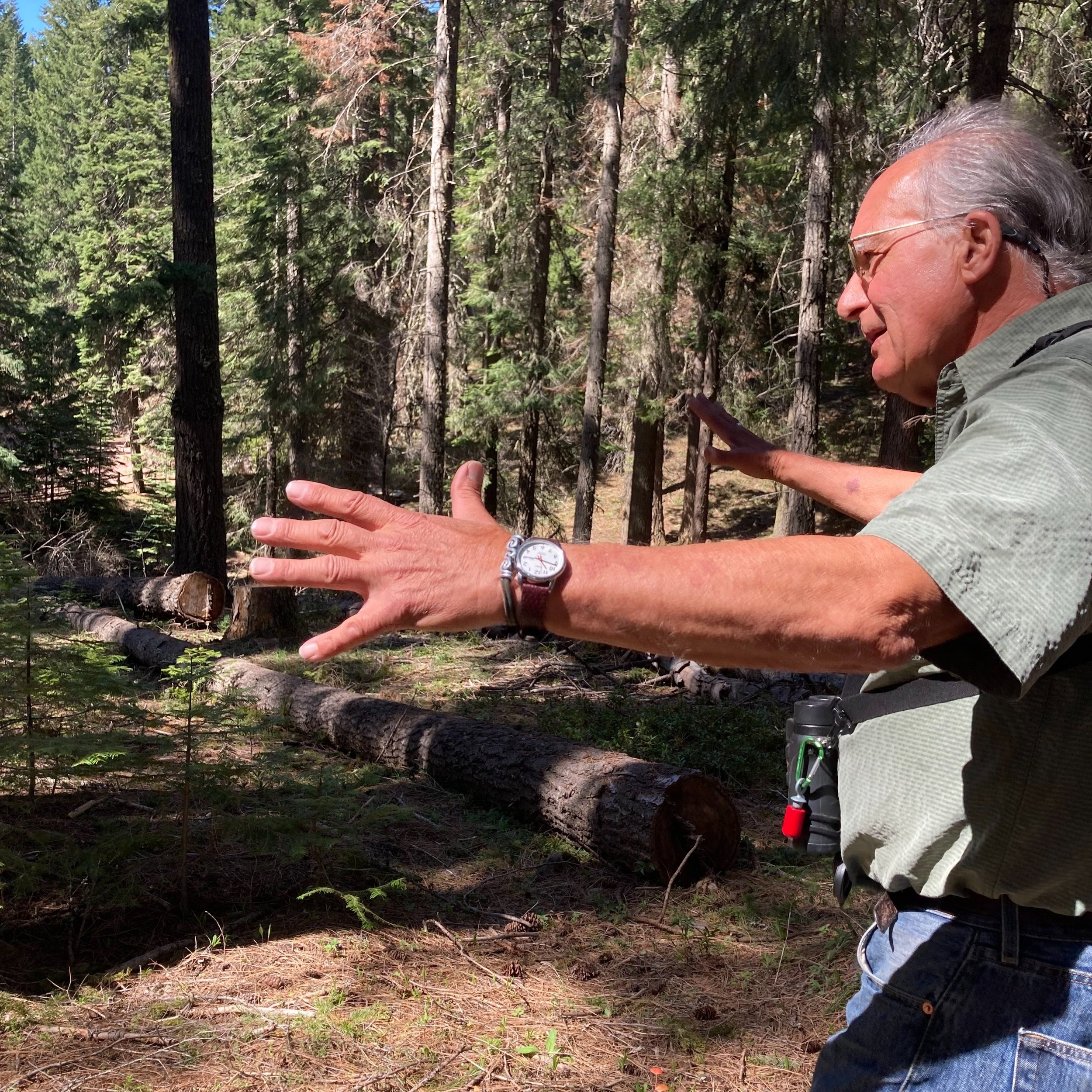
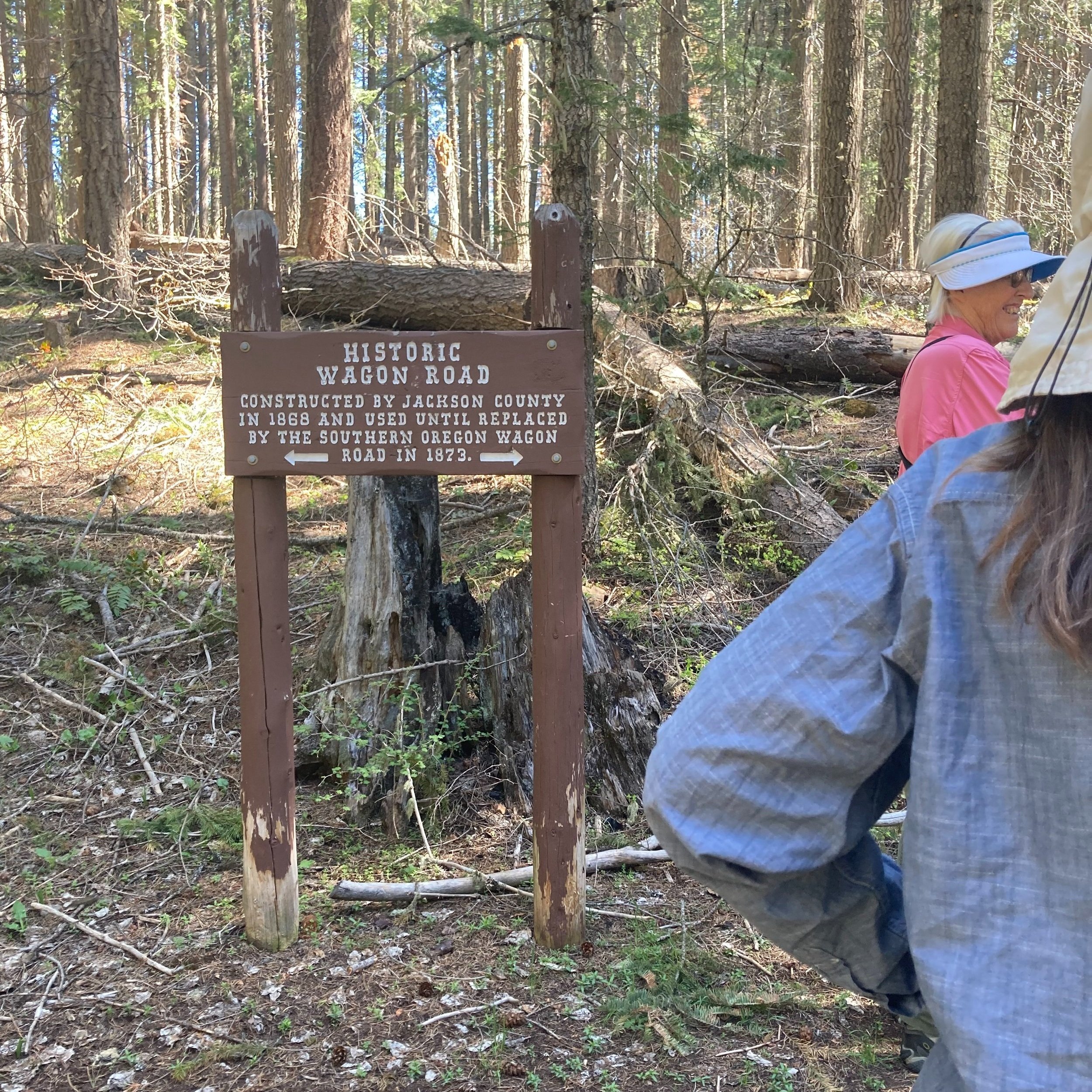
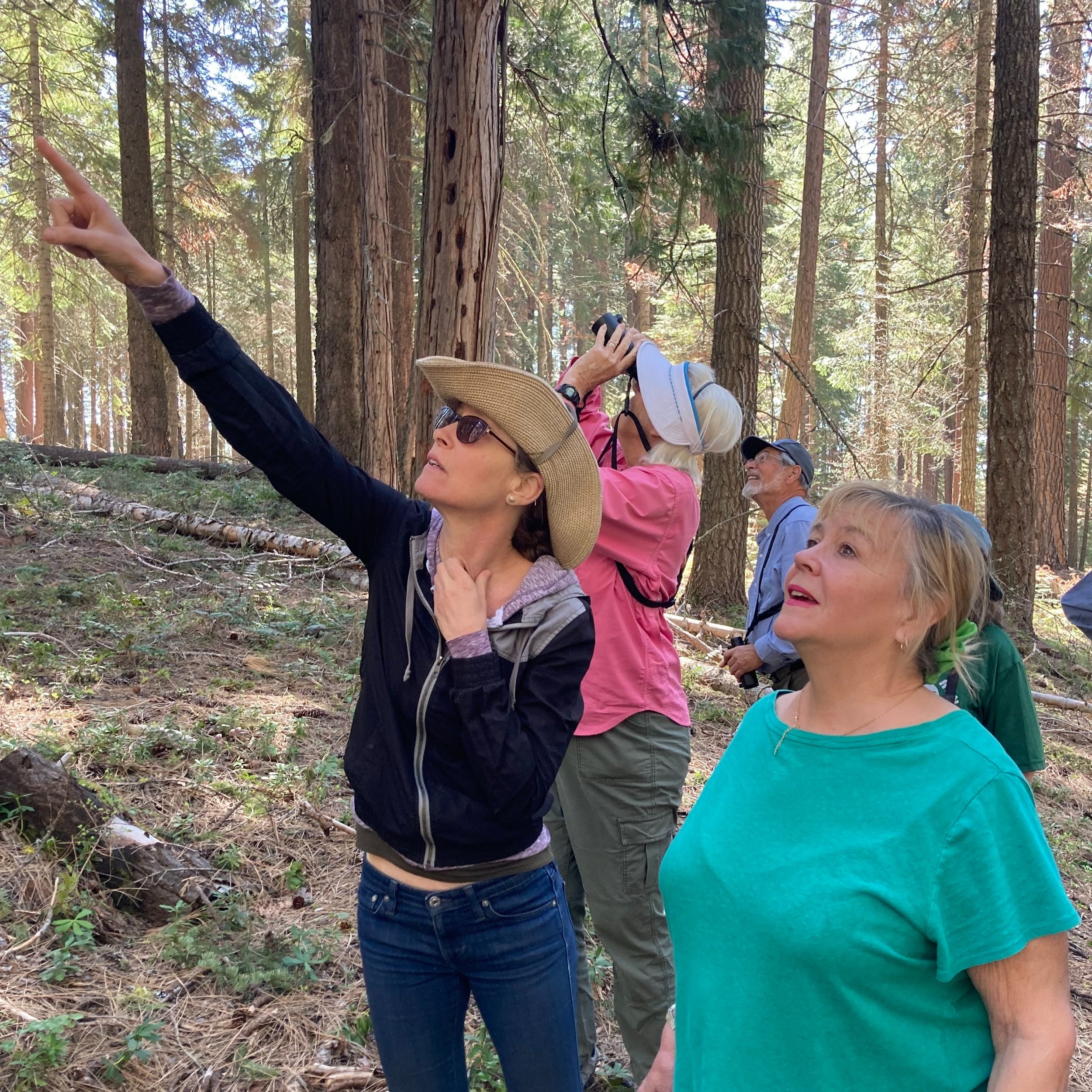

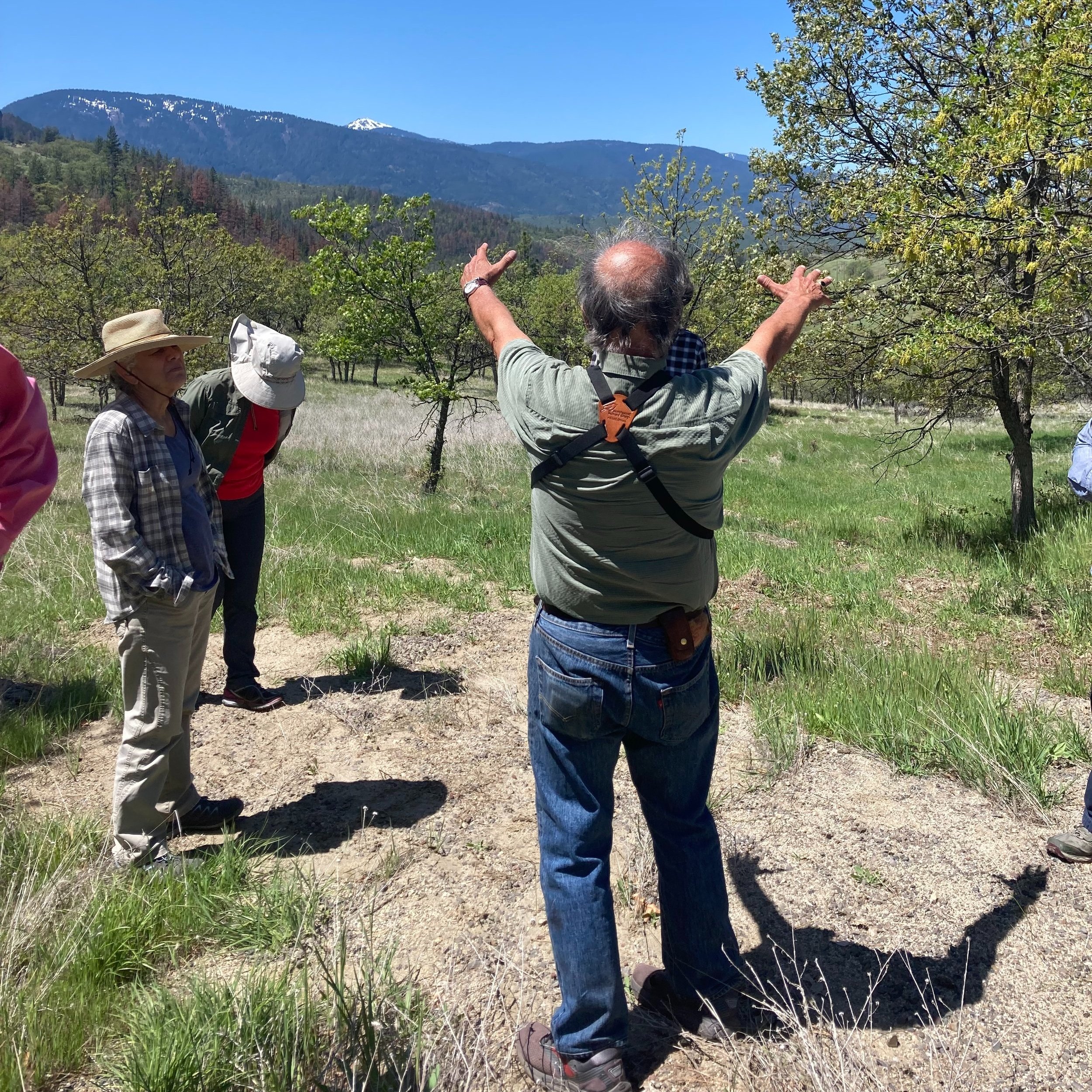
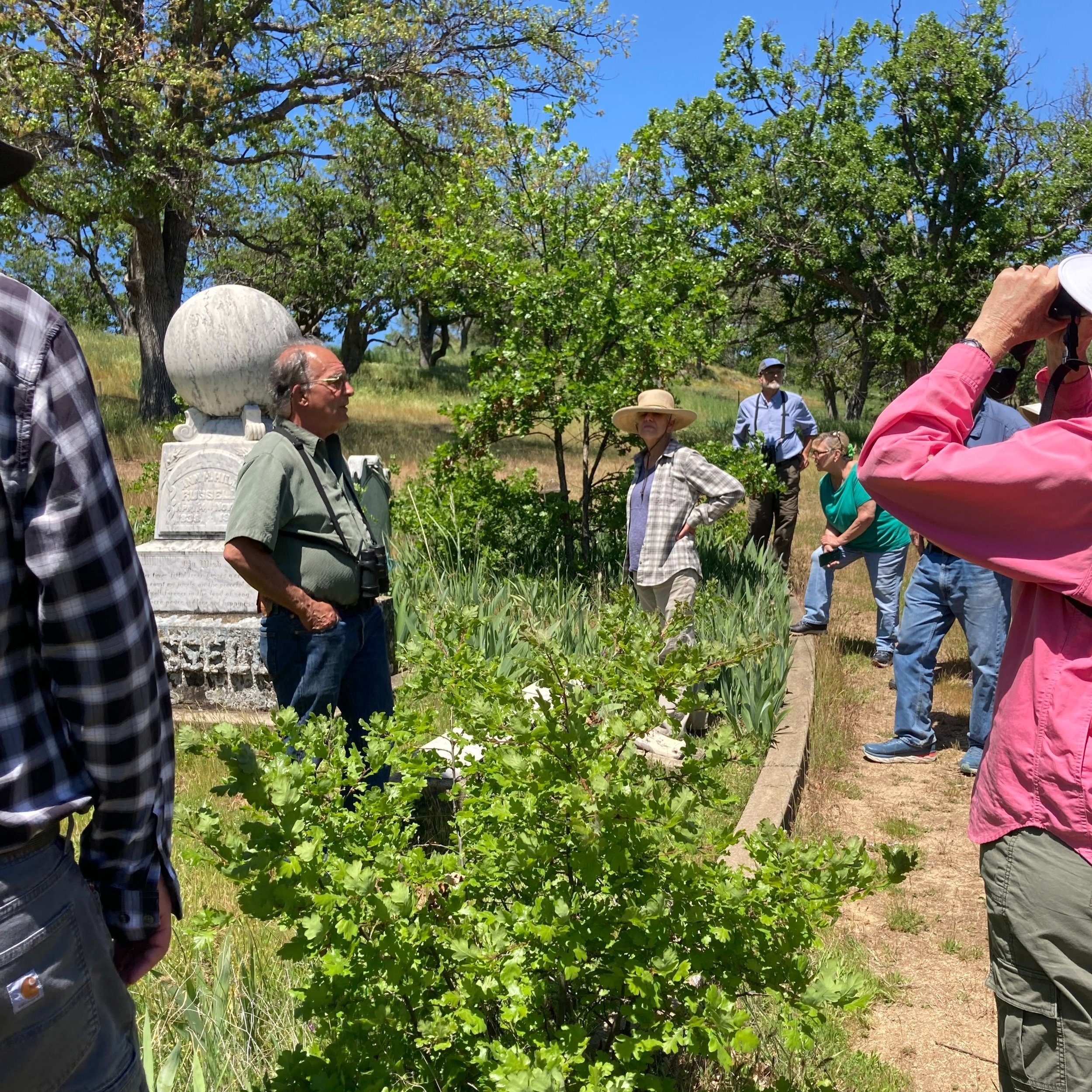
We began our tour on Saturday, May 13 with a caravan of vehicles heading up into the Cascade-Siskiyou National Monument. With Jeff as our leader, our first stop was the town of Lincoln on Highway 66. There, Jeff began the day with an overview of the indigenous people who called the Monument, the Rogue Valley, and surrounding areas home and how the town of Lincoln got its start. Next, we found ourselves at the Tub Springs State Wayside. While the spring itself was dry due to water quality concerns from our very wet winter, Jeff took us up the trail and into the surrounding forest. In addition to some well deserved breaks to do a little impromptu birding, we viewed the Historic Wagon Trail built by Jackson County in 1868 that used a similar path as the Applegate Trail. In fact, Jeff guided us to several areas where we could see remnants of the original trail itself as evidenced by compacted ground and displaced rocks and boulders that had been moved by early settlers clearing a path for their oxen and wagons.
After stopping for a leisurely lunch alongside the Pacific Crest Trail, we meandered down Tyler Creek Road before stopping at an easily-overlooked site where the Applegate Trail was once again visible to the naked eye! It was a powerful feeling to stand on the same path that was traveled by the original European American Settlers of the Rogue Valley. Some of us reflected that even though it was less than 200 years ago, the world we are familiar with now was vastly different from what they encountered when they first laid eyes on the Valley.
Walking directly along the path of the Applegate Trail!
Finally, we wrapped up our trip with a destination outside of the Monument: The Hill-Dunn Cemetery along the edge of Emigrant Lake. Jeff told us about many of the original settlers that were buried there, including James Howard Russel and his wife Anne Hill Russel as well as many of those who died in the Rogue River Wars from 1853-1854. We learned that it was James and Anne who were responsible for much of the impressive marble monuments represented in the cemetery.
As we gathered as a group under the shade of a large oak tree, we all expressed gratitude to Jeff for his unsurpassed knowledge of the area. Not only did he make us laugh with his stories and marvel at the beauty of the Monument, he also impressed in us an appreciation for the sometimes-faint footprints of history on the landscape that can help us understand our own place in the unfolding history of our little corner of Southern Oregon.
